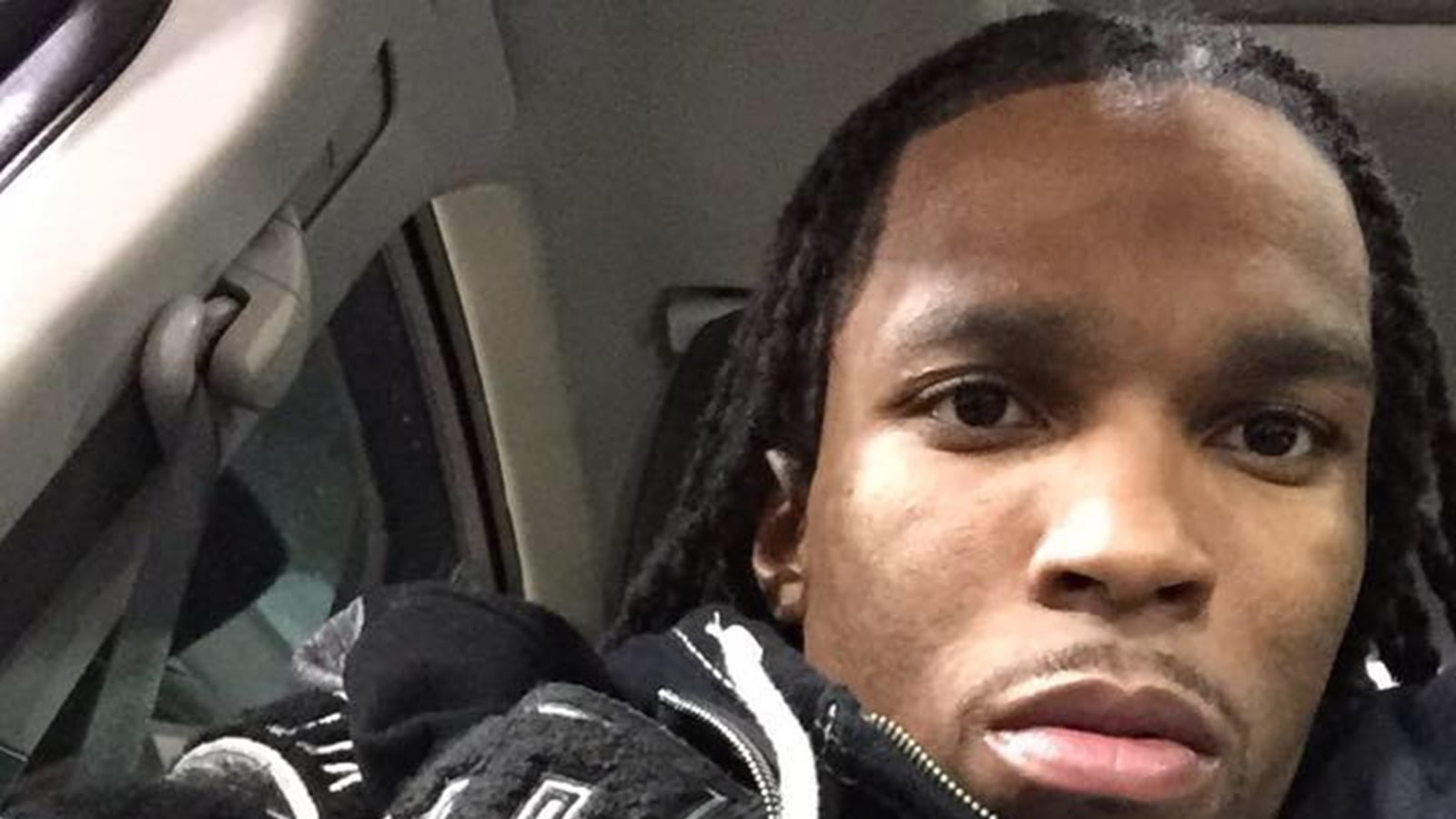The Ferguson protester who was shot to death and subsequently torched inside a car on Tuesday isn’t the first man from St. Louis County in the last two years to see such a gangland-style fate.
He’s the sixth.
Darren Seals was found early Tuesday in the 9600 block of Diamond Drive, according to the St. Louis Post-Dispatch. Google maps shows that to be a street that dead ends into a field next to a concrete mixing plant just a few blocks from the Mississippi River. The Post-Dispatch reports that Seals lived less than five miles away.
Few details have emerged regarding what appears to be a clear execution, and just like the case of DeAndre Joshua, who was shot in the head before his killer or killers set fire to his car on the November 2014 night a grand jury decided not to indict officer Darren Wilson for the killing of Michael Brown, the St. Louis County Police Department isn’t talking.
From the moment his body was taken from the scene, Joshua became nothing more than a footnote in the story of Ferguson.
The other men who died in such fashion as Seals and Joshua in St. Louis County are even less known.
Vincent “Vinnie” Casella’s body was found riddled with bullets in February 2014. His car, marked by stickers of his favorite bands, had been set on fire. In August of last year, Casella’s family offered a reward of $30,000 for any information about his murder.
Darnell Robinson was killed in the same fashion as Joshua: gunshot wound to the head, car torched. It happened in September 2014 and by October police released surveillance video showing a woman lighting Robinson’s car on fire. Three men—Dylan George Izirarry, Dana Wallace, and Bryant Evans—have been charged in Robinson’s murder.
Since November 2014 police have been seeking Hairl T. Johnson as a “person of interest” in the murder of Antonio Jones, a Ferguson man whose body was found in the trunk of a burning car in East St. Louis that month. The East St. Louis Police Department didn’t make it easy for tipsters to report sightings or information about Johnson: When I called the Major Case Squad hotline while reporting from Ferguson I was told that the cops manning the phones had left about a week prior.
My trip to police headquarters in East St. Louis proved to show one slightly amusing but deeply unsettling discovery after another. This was a police department in such disarray it could not even answer basic questions from a reporter, let alone have a properly working hotline to get information on a gangland execution for more than a week. I should have been directed to the detective bureau when I called the hotline, I was told. That never happened, of course, until I went and knocked on the door. Johnson’s murder remains unsolved.
We know who killed Terrell Beasley, we just don’t know who went to the trouble of setting his car on fire. On Dec. 19, 2014, Beasley was in a car with Dominic Irons and another man when someone in the vehicle shot at Don McGhee, an off-duty St. Louis cop. McGhee returned fire, killing Beasley, whose body was found several hours later in the burning car. McGhee, after being initially suspended for the incident, was eventually fired from the force after being sentenced to two years in federal prison for giving a shotgun to a drug dealer.
Police face many challenges in solving such crimes, not the least of which is the destruction of evidence that flames provide. They also face silence.
The day after Joshua’s death I went to the scene of his murder and knocked on doors. I was struck not only by the unwillingness of people to answer—this was also the day after Ferguson went up in flames after the grand jury decision—but the unwillingness to talk even to each other. No one knew the person next door. No one knew anything about the car fire that happened in the parking lot of their apartment the night before. People didn’t even want to admit to seeing police and firefighters arrive.
Joshua ran with a circle that included Dorian Johnson, the friend of Michael Brown who was with him the day he robbed Ferguson Market and Liquor, the same day of his fatal altercation with Officer Darren Wilson. I was told by friends and family of Joshua that his proximity to Brown was causing tight lips to become even tighter. One family member even went so far as to speculate that the police had something to do with the killing.
No one has ever been arrested for Joshua’s murder. But Wednesday, as news of Seals’s death spread, Joshua’s twin brother posted a link to a story about Joshua’s killing on his Facebook page saying, “RIP bro.”

While Joshua remains a minor detail in the much larger story of Ferguson, which helped push the Black Lives Matter movement to national prominence, he still has a presence on the street he was killed.
When I stopped by Ferguson in July I drove down Canfield Drive, where Brown was killed. The memorial for Brown was gone then. But at the end of Canfield Drive where Joshua was murdered and his car set aflame, a pile of stuffed animals surrounding a tree and teddy bears dangling from it, remained.






